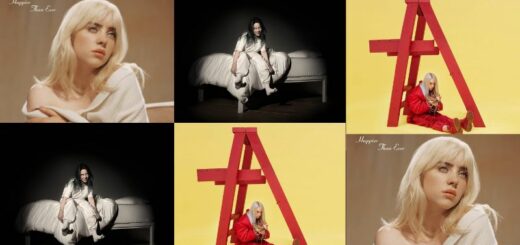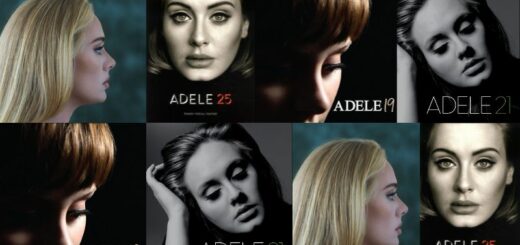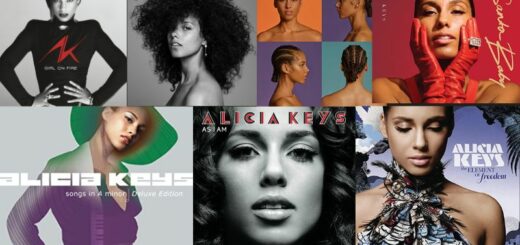The List of David Bowie Albums in Order of Release
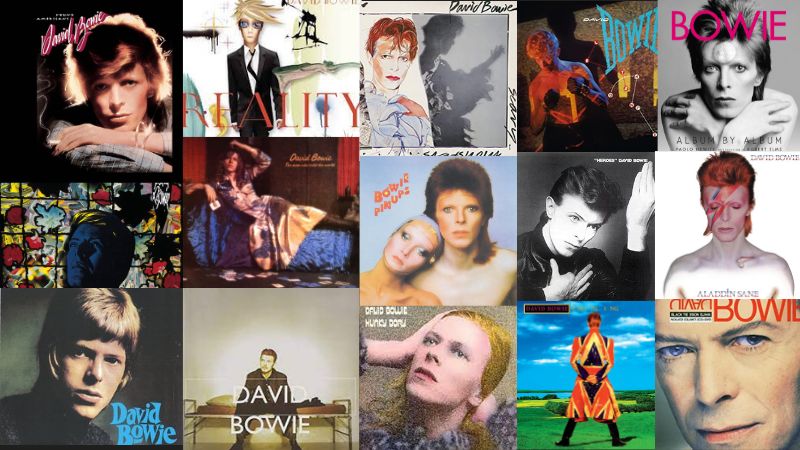
David Bowie Albums in Order: From the celestial echoes of ‘Space Oddity’ to the pulsating rhythms of ‘Under Pressure,’ David Robert Jones, known as David Bowie, sculpted an extraordinary legacy in music and culture.
David Bowie, born David Robert Jones on January 8, 1947, and passing on January 10, 2016, left an indelible mark on music, revered as an iconic English singer, songwriter, musician, and actor. His innovative prowess and boundary-pushing artistry rendered him a luminary of the 20th century music scene. Bowie’s career epitomized reinvention, characterized by transformative musical and visual expressions.
Rising to prominence in the ’70s, he etched his place in history through the flamboyant alter ego Ziggy Stardust, igniting acclaim with hits like “Space Oddity” and the iconic album “The Rise and Fall of Ziggy Stardust and the Spiders from Mars.” His sonic evolution traversed genres, from glam rock to “plastic soul” and electronic-infused sounds, culminating in chart-toppers like “Fame” and “Under Pressure” with Queen. Bowie’s enduring legacy encompasses a versatile oeuvre, cinematic roles, and a monumental impact on popular culture, solidifying his status as an immortal icon in music history.
His innovative spirit continues to resonate, earning him accolades such as induction into the Rock and Roll Hall of Fame and ongoing recognition as one of the greatest artists of all time. Bowie’s influential artistry remains etched in history, as seen through his enduring record sales exceeding 100 million worldwide and the enduring allure of vinyl sales, positioning him as the best-selling vinyl artist of the 21st century as of 2022. So, if you are a die heart fan of David Bowie Albums then check out here we have list of David Bowie albums in order of release so far.
All David Bowie Albums Available on: Apple Music
How many albums does David Bowie have?
The discography of English singer-songwriter David Bowie released 26 studio albums, 21 live albums, 46 compilation albums, 10 extended plays, 128 singles, 3 soundtracks and 12 box sets.
All David Bowie Albums in Order: Check Out The List of David Bowie Albums in Order of Release Here!
Here is the list of David Bowie Album in Order of Release Date:
- David Bowie — 1 June 1967
- David Bowie — 14 November 1969
- The Man Who Sold the World — 4 November 1970
- Hunky Dory — 17 December 1971
- The Rise and Fall of Ziggy Stardust and the Spiders from Mars — 16 June 1972
- Aladdin Sane — 13 April 1973
- Pin Ups — 19 October 1973
- Diamond Dogs — 24 May 1974
- Young Americans — 7 March 1975
- Station to Station — 23 January 1976
- Low — 14 January 1977
- “Heroes” — 14 October 1977
- Lodger — 18 May 1979
- Scary Monsters (and Super Creeps) — 12 September 1980
- Let’s Dance — 14 April 1983
- Tonight — 1 September 1984
- Never Let Me Down — 27 April 1987
- Black Tie White Noise — 5 April 1993
- The Buddha of Suburbia — 8 November 1993
- Outside — 26 September 1995
- Earthling — 3 February 1997
- Hours — 4 October 1999
- Heathen — 10 June 2002
- Reality — 15 September 2003
- The Next Day — 8 March 2013
- Blackstar — 8 January 2016
All David Bowie Albums List in Order
1. David Bowie (1967)

Track
- Uncle Arthur
- Sell Me a Coat
- Rubber Band
- Love You till Tuesday
- There Is a Happy Land
- We Are Hungry Men
- When I Live My Dream
- Little Bombardier
- Silly Boy Blue
- Come and Buy My Toys
- Join the Gang
- She’s Got Medals
- Maid of Bond Street
- Please Mr. Gravedigger
“David Bowie” is the eponymous debut studio album by English musician David Bowie, released in 1967. The album features a diverse range of musical styles, including folk, psychedelic rock, and pop. Though it did not achieve commercial success upon its release, it showcased Bowie’s experimental nature and his ability to reinvent himself. The album includes tracks like “Rubber Band” and “Love You Till Tuesday,” showcasing Bowie’s early songwriting skills and his distinct vocal delivery. “David Bowie” laid the foundation for Bowie’s illustrious career and hinted at the musical brilliance that would come to define him as an iconic and influential artist.
2. David Bowie (1969)
![David Bowie Album David Bowie[C] image](https://albumsinorder.com/wp-content/uploads/2022/12/David-Bowie-Album-David-BowieC-image.jpg)
Track
- Space Oddity
- Unwashed and Somewhat Slightly Dazed
- Letter to Hermione
- Cygnet Committee
- Janine
- An Occasional Dream
- Wild Eyed Boy from Freecloud
- God Knows I’m Good
- Memory of a Free Festival
“David Bowie” is the self-titled second studio album by the iconic British musician David Bowie, released in 1969. It marked a significant departure from his debut album, showcasing Bowie’s evolving musical style and experimental approach. The album features a blend of folk, pop, and psychedelic rock, with tracks like “Space Oddity” becoming enduring classics. Bowie’s distinctive vocals and lyrical depth shine through, establishing him as an innovative and influential artist. “David Bowie” set the stage for Bowie’s transformational career and laid the groundwork for his future groundbreaking releases.
3. The Man Who Sold the World (1970)

Track
- The Width of a Circle
- All the Madmen
- Black Country Rock
- After All
- Running Gun Blues
- Saviour Machine
- She Shook Me Cold
- The Man Who Sold the World
- The Supermen
David Bowie’s album “The Man Who Sold the World” was released in 1970 and marked a significant turning point in his career. Departing from his earlier folk and psychedelic influences, Bowie embraced a heavier sound and introduced his alter ego, Ziggy Stardust, through the album’s iconic cover art. With its dark and introspective lyrics, coupled with a fusion of hard rock and glam elements, “The Man Who Sold the World” showcased Bowie’s artistic growth and set the stage for his subsequent groundbreaking albums. This influential record continues to be celebrated for its bold experimentation and timeless musicality.
4. Hunky Dory (1971)

Track
- Changes
- Oh! You Pretty Things
- Eight Line Poem
- Life on Mars?
- Kooks
- Quicksand
- Fill Your Heart
- Andy Warhol
- Song for Bob Dylan
- Queen Bitch
- The Bewlay Brothers
David Bowie’s album “Hunky Dory,” released in 1971, stands as a significant milestone in his illustrious career. This critically acclaimed record showcases Bowie’s artistic versatility and songwriting prowess. With tracks like “Changes,” “Life on Mars?,” and “Oh! You Pretty Things,” Bowie effortlessly explores a range of musical genres, from glam rock to art pop. “Hunky Dory” serves as a creative bridge between his earlier work and the iconic Ziggy Stardust persona that would define his later career. Its introspective lyrics, melodic richness, and Bowie’s charismatic delivery make “Hunky Dory” an enduring masterpiece that continues to captivate listeners to this day.
5. The Rise and Fall of Ziggy Stardust and the Spiders from Mars (1972)
Track

- Five Years
- Soul Love
- Moonage Daydream
- Starman
- It Ain’t Easy
- Lady Stardust
- Star
- Hang On to Yourself
- Ziggy Stardust
- Suffragette City
- Rock ‘n’ Roll Suicide
“The Rise and Fall of Ziggy Stardust and the Spiders from Mars” is a seminal album by British rock icon David Bowie, released in 1972. This concept album tells the story of Ziggy Stardust, an androgynous alien rock star who comes to Earth as a messenger of hope. Bowie’s alter ego, Ziggy Stardust, became an iconic figure in popular culture. The album’s blend of glam rock, art rock, and theatricality showcased Bowie’s musical versatility and innovative approach. It remains a landmark album, influencing generations of musicians and solidifying David Bowie’s status as a visionary artist.
6. Aladdin Sane (1973)
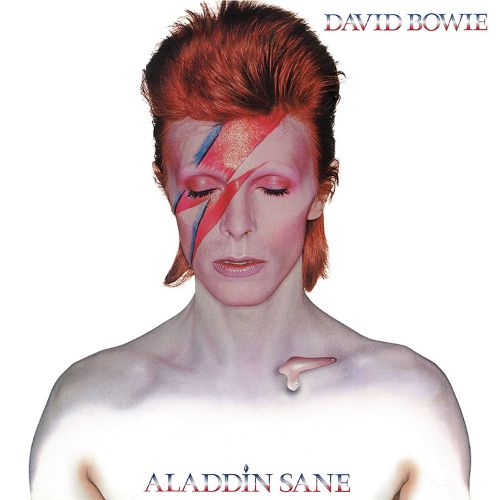
Track
- Watch That Man
- Aladdin Sane (1913–1938–197?)
- Drive-In Saturday
- Panic in Detroit
- Cracked Actor
- Time
- The Prettiest Star
- Let’s Spend the Night Together
- The Jean Genie
- Lady Grinning Soul
David Bowie’s album “Aladdin Sane” was released in 1973 and is considered one of his most iconic and influential works. Serving as a follow-up to his groundbreaking album “The Rise and Fall of Ziggy Stardust and the Spiders from Mars,” “Aladdin Sane” showcased Bowie’s innovative musical style and eclectic artistry. The album features the hit single “Jean Genie,” known for its infectious guitar riff and Bowie’s charismatic vocals. With its blend of glam rock, avant-garde elements, and introspective lyrics, “Aladdin Sane” solidified Bowie’s status as a visionary artist and further cemented his impact on the music world.
7. Pin Ups (1973)
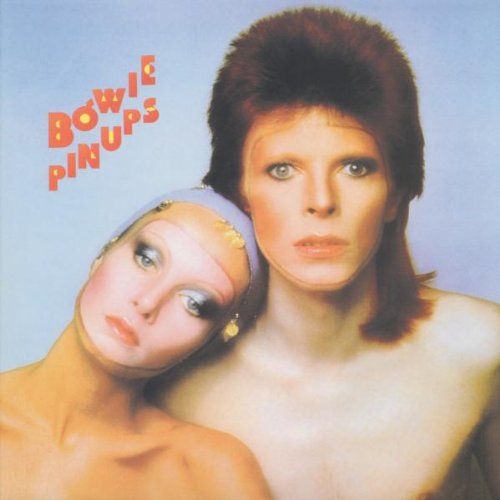
Track
- Rosalyn
- Here Comes the Night
- I Wish You Would
- See Emily Play
- Everything’s Alright
- I Can’t Explain
- Friday on My Mind
- Sorrow
- Don’t Bring Me Down
- Shapes of Things
- Anyway, Anyhow, Anywhere
- Where Have All the Good Times Gone
David Bowie’s “Pin Ups” is a cover album released in 1973. It pays tribute to the British rock and pop songs that had influenced Bowie during his early years. The album features Bowie’s interpretations of songs originally recorded by artists like The Who, The Kinks, and Pink Floyd, among others. With his unique flair and musical versatility, Bowie puts his own spin on these classic tracks, infusing them with his distinctive style. “Pin Ups” showcases Bowie’s ability to reinvent and breathe new life into familiar songs, further solidifying his reputation as a visionary artist in the music industry.
8. Diamond Dogs (1974)
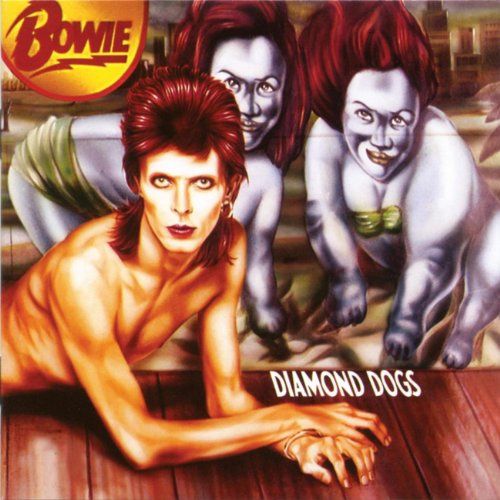
Track
- Future Legend
- Diamond Dogs
- Sweet Thing
- Candidate
- Sweet Thing (Reprise)
- Rebel Rebel
- Rock ‘n’ Roll with Me
- We Are the Dead
- 1984
- Big Brother
- Chant of the Ever Circling Skeletal Family
David Bowie’s album “Diamond Dogs” was released in 1974 and marked a significant transition in his musical style. The album combined elements of glam rock, soul, and avant-garde experimentation, showcasing Bowie’s ever-evolving artistic vision. With tracks like “Rebel Rebel” and the title track “Diamond Dogs,” Bowie explored themes of dystopia, rebellion, and sexuality. The album’s cover art featured Bowie as a half-human, half-dog hybrid, symbolizing the post-apocalyptic world depicted in the songs. “Diamond Dogs” remains a testament to Bowie’s boundary-pushing creativity and his ability to continually reinvent himself as an iconic figure in the music industry.
9. Young Americans (1975)
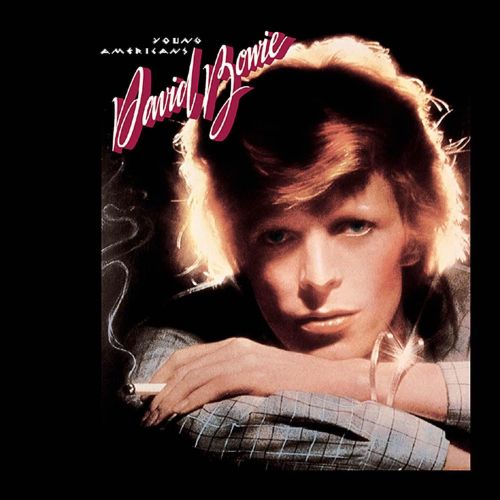
Track
- Young Americans
- Win
- Fascination
- Right
- Somebody Up There Likes Me
- Across the Universe
- Can You Hear Me?
- Fame
David Bowie’s album “Young Americans” was released in 1975, marking a notable departure from his previous glam rock sound. The album embraced soul, R&B, and funk influences, showcasing Bowie’s versatility as an artist. With tracks like the title song “Young Americans” and the iconic “Fame,” Bowie explored themes of love, identity, and the American dream. The album’s blend of catchy hooks, rich vocal performances, and socially conscious lyrics contributed to its critical and commercial success, solidifying Bowie’s status as a musical innovator and cementing “Young Americans” as a timeless classic in his extensive discography.
10. Station to Station (1976)

Track
- Station to Station
- Golden Years
- Word on a Wing
- TVC 15
- Stay
- Wild Is the Wind
“Station to Station” is the iconic tenth studio album by English musician David Bowie, released in 1976. The album is renowned for its genre-bending style, combining elements of rock, funk, soul, and electronic music. Clocking in at just under 38 minutes, “Station to Station” features six tracks, including the epic title track that spans over ten minutes. The album showcases Bowie’s experimental and chameleon-like nature, with his persona during this era being the enigmatic and alien-like Thin White Duke. “Station to Station” is widely regarded as a pivotal work in Bowie’s discography, marking a transition between his earlier glam rock period and his later Berlin trilogy.
11. Low (1977)
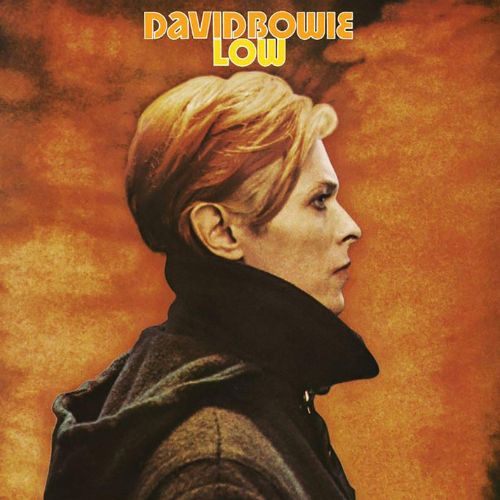
Track
- Speed of Life
- Breaking Glass
- What in the World
- Sound and Vision
- Always Crashing in the Same Car
- Be My Wife
- A New Career in a New Town
- Warszawa
- Art Decade
- Weeping Wall
- Subterraneans
David Bowie’s “Low” is a groundbreaking album released in 1977. It marked a significant departure from Bowie’s previous glam rock sound and showcased his innovative musical experimentation. “Low” combined elements of electronic music, ambient textures, and avant-garde influences, creating a unique and influential sonic landscape. The album’s instrumental compositions and introspective lyrics reflected Bowie’s personal struggles and creative exploration. With its unconventional song structures and the inclusion of iconic tracks like “Sound and Vision,” “Low” remains a seminal work that pushed boundaries and cemented Bowie’s status as a visionary artist.
12. “Heroes” (1977)
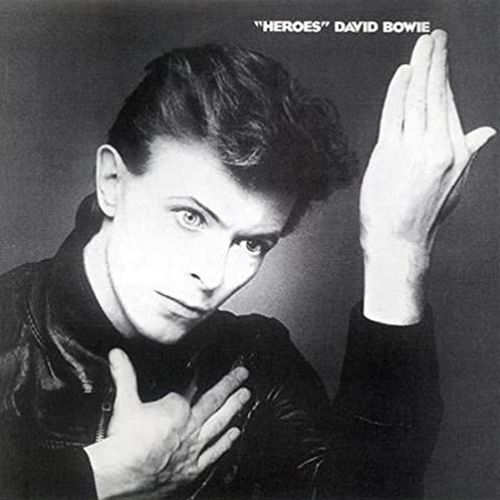
Track
- Beauty and the Beast
- Joe the Lion
- Heroes
- Sons of the Silent Age
- Blackout
- V-2 Schneider
- Sense of Doubt
- Moss Garden
- Neuköln
- The Secret Life of Arabia
David Bowie’s “Heroes” is a landmark album released in 1977. It represents a significant chapter in Bowie’s career, both musically and personally. The title track, “Heroes,” stands out as an iconic anthem, blending Bowie’s captivating vocals with Brian Eno’s innovative production techniques. The album showcases Bowie’s ability to reinvent himself, combining elements of art rock, new wave, and experimental music. “Heroes” is celebrated for its bold exploration of themes such as love, identity, and resilience. With its influential sound and lyrical depth, the album remains a testament to Bowie’s artistic brilliance and continues to inspire generations of musicians.
13. Lodger (1979)
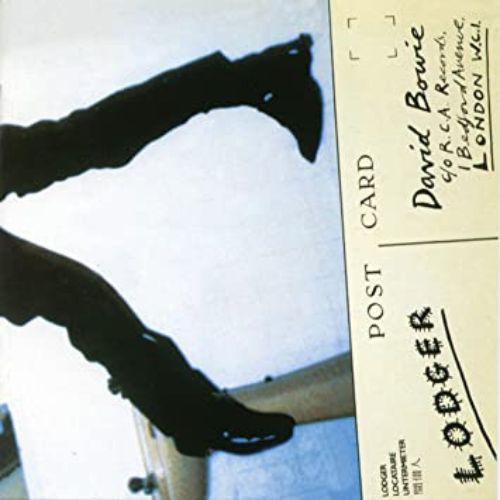
Track
- Fantastic Voyage
- African Night Flight
- Move On
- Yassassin
- Red Sails
- D.J
- Look Back in Anger
- Boys Keep Swinging
- Repetition
- Red Money
“Lodger” is the 13th studio album by English musician David Bowie, released in 1979. It serves as the third installment of his “Berlin Trilogy” alongside “Low” and “Heroes.” “Lodger” showcases Bowie’s experimental and eclectic musical style, incorporating elements of post-punk, world music, and art rock. The album received mixed reviews upon its release but has since gained recognition for its adventurous songwriting and sonic exploration. Tracks like “Boys Keep Swinging” and “DJ” exemplify Bowie’s ability to blend catchy melodies with thought-provoking lyrics. “Lodger” remains a fascinating and essential part of Bowie’s extensive discography.
14. Scary Monsters (and Super Creeps) (1980)

Track
- It’s No Game (No. 1)
- Up the Hill Backwards
- Scary Monsters (And Super Creeps)
- Ashes to Ashes
- Fashion
- Teenage Wildlife
- Scream Like a Baby
- Kingdom Come
- Because You’re Young
- It’s No Game (No. 2)
“Scary Monsters (and Super Creeps)” is the fourteenth studio album by British musician David Bowie, released in 1980. The album showcased Bowie’s artistic reinvention, blending elements of new wave, post-punk, and experimental rock. It featured notable tracks like “Ashes to Ashes” and “Fashion,” which became iconic songs of the era. “Scary Monsters” received critical acclaim for its bold and innovative sound, incorporating synthesizers and guitar-driven melodies. The album’s themes explored Bowie’s fascination with technology, identity, and the anxieties of the modern world. It remains a significant and influential release in Bowie’s discography, representing his constant evolution as a musical visionary.
15. Let’s Dance (1983)

Track
- Modern Love
- China Girl
- Let’s Dance
- Without You
- Ricochet
- Criminal World
- Cat People (Putting Out Fire)
- Shake It
David Bowie’s album “Let’s Dance,” released in 1983, marked a significant shift in his musical style. Produced by Nile Rodgers, the album embraced a more commercial sound, blending elements of pop, dance, and rock. The title track, “Let’s Dance,” became a global hit, showcasing Bowie’s ability to create infectious and catchy melodies. The album also featured other notable tracks such as “Modern Love” and “China Girl.” With its polished production and accessible sound, “Let’s Dance” catapulted Bowie to mainstream success, reaching the top of charts worldwide and solidifying his status as a pop icon.
16. Tonight (1984)
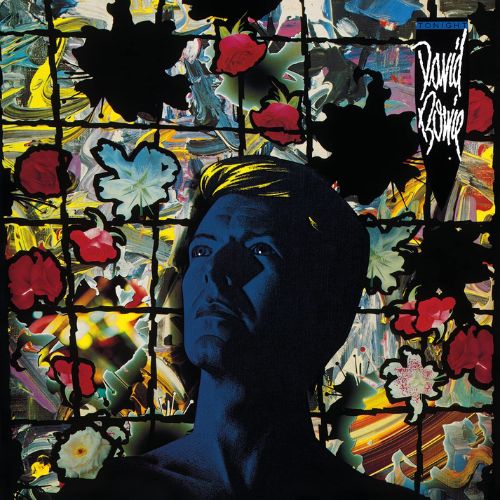
Track
- Loving the Alien
- Don’t Look Down
- God Only Knows
- Tonight
- Neighborhood Threat
- Blue Jean
- Tumble and Twirl
- I Keep Forgettin
- Dancing with the Big Boys
David Bowie’s album “Tonight” was released in 1984, showcasing the artist’s ever-evolving musical style. The album followed the success of his critically acclaimed record “Let’s Dance” and continued Bowie’s exploration of pop and dance-oriented sounds. “Tonight” featured collaborations with renowned artists like Tina Turner and Iggy Pop, adding depth and variety to the album’s tracks. While it achieved commercial success, the album received mixed reviews from critics, with some praising Bowie’s vocals and production choices, while others felt it lacked the innovation and depth of his previous works. Nonetheless, “Tonight” remains an important entry in Bowie’s extensive discography, showcasing his versatility and willingness to experiment with different musical genres.
17. Never Let Me Down (1987)

Track
- Day-In Day-Out
- Time Will Crawl
- Beat of Your Drum
- Never Let Me Down
- Zeroes
- Glass Spider
- Shining Star (Makin’ My Love)
- New York’s in Love
- 87 and Cry
- Too Dizzy
- Bang Bang
David Bowie’s album “Never Let Me Down” was released in 1987. It marked a departure from his previous critically acclaimed works and received mixed reviews from both fans and critics. The album incorporated elements of pop, rock, and dance music, reflecting the trends of the era. While it featured some catchy and memorable tracks like the title song “Never Let Me Down,” the album was criticized for its inconsistent songwriting and production. Despite its reception, “Never Let Me Down” remains an intriguing chapter in Bowie’s extensive discography, showcasing his willingness to experiment and explore different musical styles.
18. Black Tie White Noise (1993)

Track
- The Wedding
- You’ve Been Around
- I Feel Free
- Black Tie White Noise
- Jump They Say
- Nite Flights
- Pallas Athena
- Miracle Goodnight
- Don’t Let Me Down & Down
- Looking for Lester
- I Know It’s Gonna Happen Someday
- The Wedding Song
“Black Tie White Noise” is the 18th studio album by the legendary musician David Bowie, released in 1993. This album marked Bowie’s return to a more electronic and dance-oriented sound after a period of experimentation with various genres. It features collaborations with renowned artists such as Mick Ronson, Nile Rodgers, and Al B. Sure!, among others. “Black Tie White Noise” explores themes of love, relationships, and racial harmony. The album received positive reviews and achieved commercial success, with singles like “Jump They Say” and the title track gaining popularity. It showcased Bowie’s versatility as an artist and further cemented his status as a musical innovator.
19. The Buddha of Suburbia (1993)

Track
- Buddha of Suburbia
- Sex and the Church
- South Horizon
- The Mysteries
- Bleed Like a Craze, Dad
- Strangers When We Meet
- Dead Against It
- Untitled No. 1
- Ian Fish, U.K. Heir
- Buddha of Suburbia
David Bowie’s album “The Buddha of Suburbia” was released in 1993. Serving as both a soundtrack and a standalone album, it accompanied the television adaptation of Hanif Kureishi’s novel of the same name. The album showcased Bowie’s experimental nature, blending elements of world music, jazz, and electronic sounds. It featured tracks like the title track “The Buddha of Suburbia” and “Strangers When We Meet.” Bowie’s diverse musical palette and introspective lyrics created a sonic landscape that delved into themes of identity, spirituality, and suburban life. “The Buddha of Suburbia” demonstrated Bowie’s continual artistic evolution and his ability to push boundaries in his music.
20. Outside (1995)
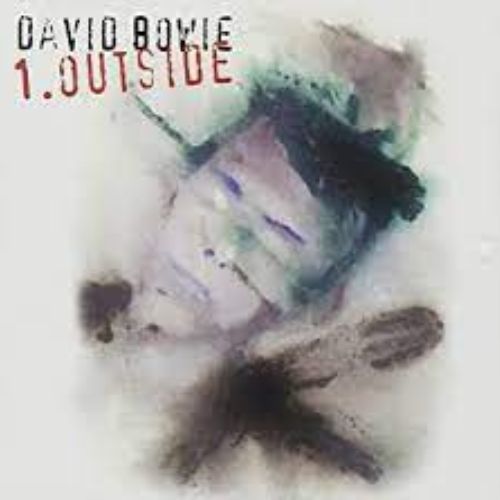
Track
- Leon Takes Us Outside
- Outside
- The Hearts Filthy Lesson
- A Small Plot of Land”
- Segue – Baby Grace (A Horrid Cassette)
- Hallo Spaceboy
- The Motel
- I Have Not Been to Oxford Town
- No Control
- Segue – Algeria Touchshriek
- The Voyeur of Utter Destruction (as Beauty)
- Segue – Ramona A. Stone/I Am with Name
- Wishful Beginnings
- We Prick You
- Segue – Nathan Adler
- I’m Deranged
- Thru’ These Architects Eyes
- Segue – Nathan Adler
- Strangers When We Meet
“Outside” is a concept album by the legendary English musician David Bowie, released in 1995. It marked Bowie’s return to a more experimental and avant-garde style, exploring themes of art, violence, and identity in a dystopian future. Produced in collaboration with Brian Eno, the album featured a complex narrative structure and showcased Bowie’s innovative approach to music. “Outside” received positive reviews for its bold and boundary-pushing sound, serving as a testament to Bowie’s artistic versatility and willingness to push creative boundaries. The album stands as a significant milestone in Bowie’s discography, demonstrating his ongoing artistic evolution and his ability to reinvent himself.
21. Earthling (1997)

Track
- Little Wonder
- Looking for Satellites
- Battle for Britain (The Letter)
- Seven Years in Tibet
- Dead Man Walking
- Telling Lies
- The Last Thing You Should Do
- I’m Afraid of Americans
- Law (Earthlings on Fire)
David Bowie’s album “Earthling,” released in 1997, showcased his ever-evolving musical style and experimental nature. It was a departure from his previous work, incorporating elements of electronic, industrial, and drum and bass genres. The album’s sound was characterized by its energetic beats, distorted guitars, and Bowie’s distinctive vocals. Lyrically, “Earthling” explored themes of technology, spirituality, and societal unrest. The album received positive reviews for its innovative sound and Bowie’s ability to adapt to contemporary trends while maintaining his artistic integrity. Tracks like “Little Wonder” and “I’m Afraid of Americans” became fan favorites and showcased Bowie’s ability to push boundaries and reinvent himself.
22. Hours (1999)

Track
- Thursday’s Child
- Something in the Air
- Survive
- If I’m Dreaming My Life
- Seven
- What’s Really Happening?
- The Pretty Things Are Going to Hell
- New Angels of Promise
- Brilliant Adventure
- The Dreamers
“Hours” is the 21st studio album by the iconic English musician David Bowie, released in 1999. It marked a departure from his previous experimental and electronic sound, returning to a more introspective and melodic style. The album showcased Bowie’s songwriting skills and featured introspective and personal themes. Tracks like “Thursday’s Child” and “Seven” received critical acclaim for their emotional depth and poignant lyrics. “Hours” demonstrated Bowie’s ability to evolve and adapt his musical style while maintaining his unique artistic vision. Although it may not be as well-known as some of his earlier works, “Hours” remains a testament to Bowie’s versatility and enduring creativity.
23. Heathen (2002)
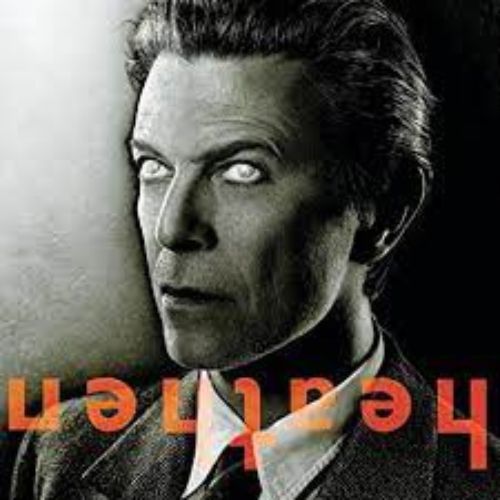
Track
- Sunday
- Cactus
- Slip Away
- Slow Burn
- Afraid
- I’ve Been Waiting for You
- I Would Be Your Slave
- I Took a Trip on a Gemini Spaceship
- 5:15 The Angels Have Gone
- Everyone Says ‘Hi
- A Better Future
- Heathen (The Rays)
David Bowie’s album “Heathen,” released in 2002, marked a significant artistic milestone in his career. The album showcased Bowie’s ability to seamlessly blend various musical styles, including rock, electronic, and art-pop, resulting in a mesmerizing and introspective collection of songs. “Heathen” received critical acclaim for its atmospheric soundscapes, thought-provoking lyrics, and Bowie’s poignant vocal delivery. The album’s themes explored existentialism, spirituality, and the state of the world, with tracks like “Slow Burn” and “Everyone Says ‘Hi'” standing out as highlights. “Heathen” solidified Bowie’s reputation as a visionary musician who continually pushed boundaries and remained relevant in the evolving music landscape.
24. Reality (2003)
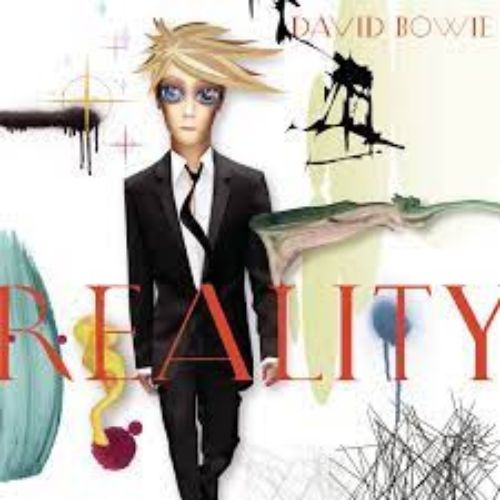
Track
- New Killer Star
- Pablo Picasso
- Never Get Old
- The Loneliest Guy
- Looking for Water
- She’ll Drive the Big Car
- Days
- Fall Dog Bombs the Moon
- Try Some, Buy Some
- Reality
- Bring Me the Disco King
David Bowie’s album “Reality,” released in 2003, marked another intriguing chapter in the artist’s illustrious career. Building upon the experimental and introspective style he had become known for, “Reality” showcased Bowie’s continued ability to reinvent himself. The album featured a dynamic blend of rock, electronic, and art-pop influences, with tracks such as “New Killer Star” and “Never Get Old” capturing Bowie’s distinctive sound. With its introspective lyrics and captivating melodies, “Reality” served as a testament to Bowie’s enduring creativity and musical prowess, solidifying his status as an icon in the world of popular music.
25. The Next Day (2013)

Track
- The Next Day
- Dirty Boys
- The Stars (Are Out Tonight)
- Love Is Lost
- Where Are We Now?
- Valentine’s Day
- If You Can See Me
- I’d Rather Be High
- Boss of Me
- Dancing Out in Space
- How Does the Grass Grow?
- (You Will) Set the World on Fire
- You Feel So Lonely You Could Die
- Heat
David Bowie’s album “The Next Day” was released in 2013, marking his highly anticipated return to the music scene after a decade-long hiatus. The album received widespread critical acclaim for its bold and innovative sound, showcasing Bowie’s ability to reinvent himself once again. “The Next Day” embraced a diverse range of musical styles, featuring elements of rock, art pop, and glam rock. With introspective lyrics and a powerful sonic landscape, the album captured Bowie’s artistic vision and proved that he was still a force to be reckoned with in the music industry.
26. Blackstar (2016)
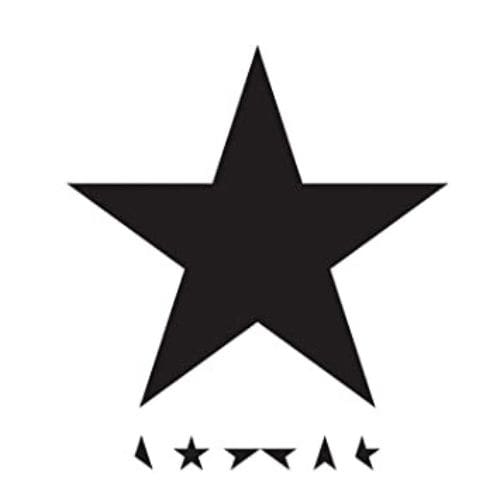
Track
- Blackstar
- ‘Tis a Pity She Was a Whore
- Lazarus
- Sue (Or in a Season of Crime)
- Girl Loves Me
- Dollar Days
- I Can’t Give Everything Away
David Bowie’s album “Blackstar” was released in 2016 and left an indelible mark on the music industry. It showcased Bowie’s boundary-pushing artistry and served as a testament to his creative genius. The album, released just days before his untimely death, features a fusion of various musical styles, including jazz, electronic, and experimental rock. “Blackstar” is characterized by its introspective and enigmatic lyrics, haunting melodies, and intricate instrumentation. It received widespread critical acclaim for its boldness and innovation, solidifying David Bowie’s status as a musical icon and leaving a poignant final statement from a legendary artist.
Thanks for visit!

